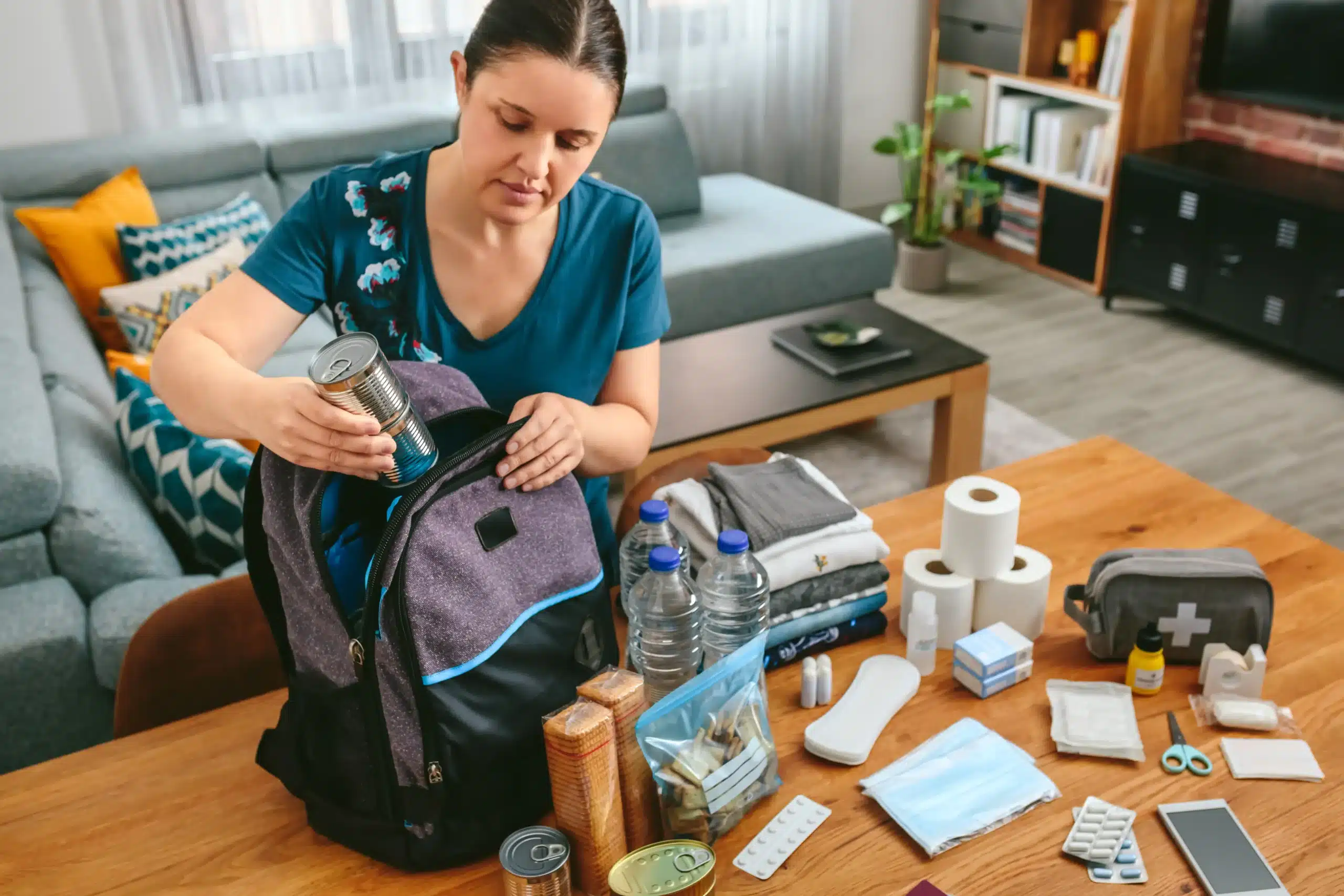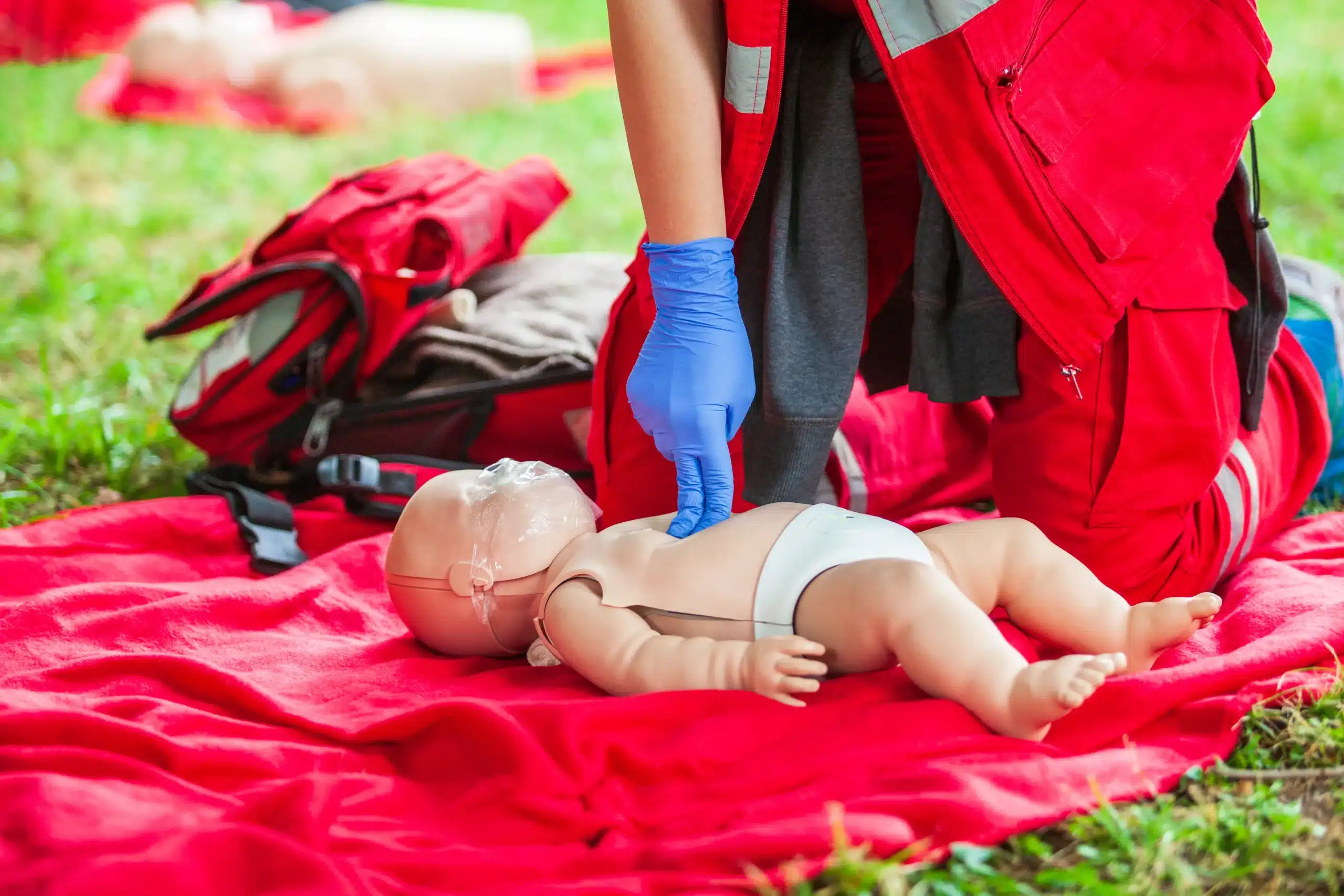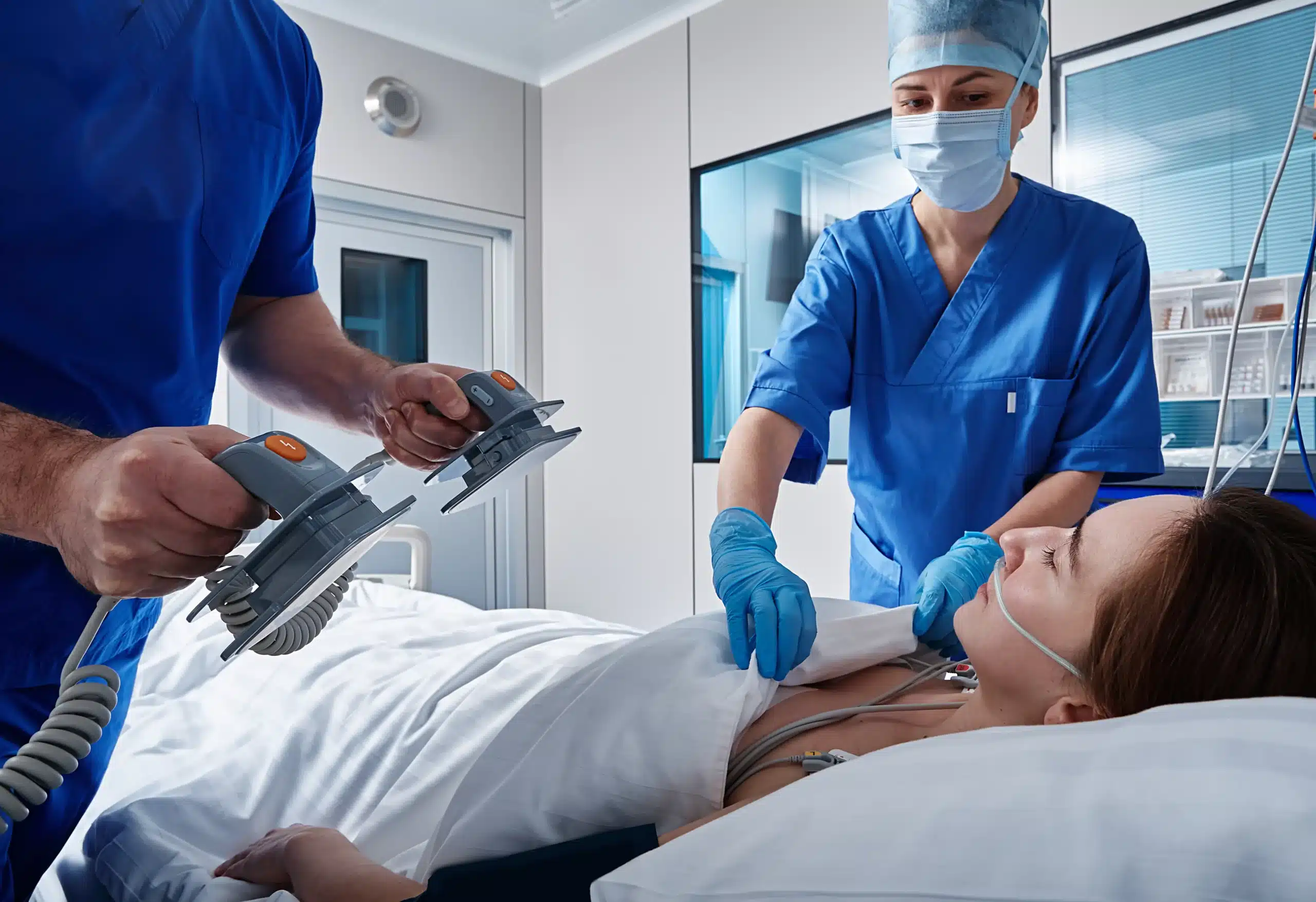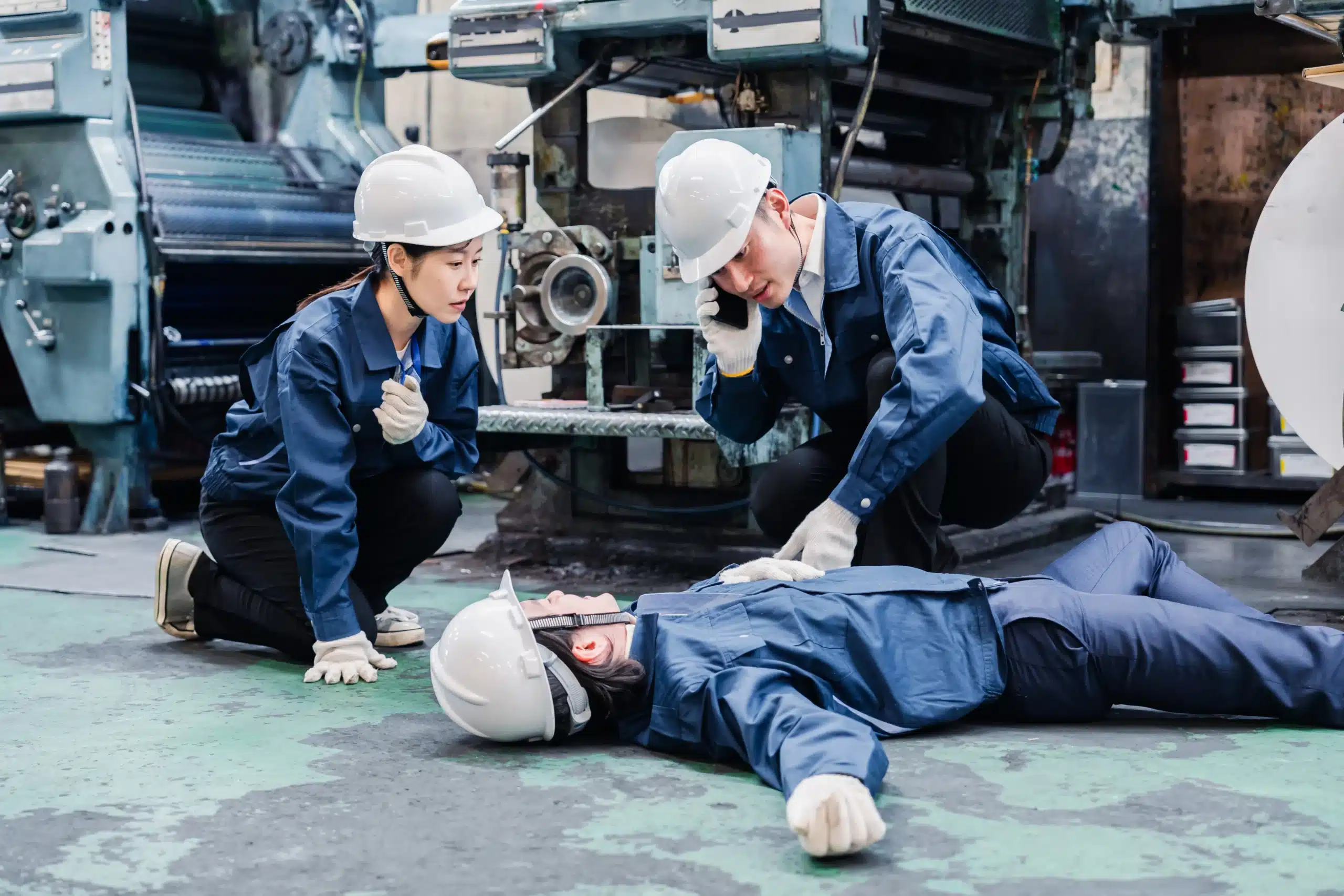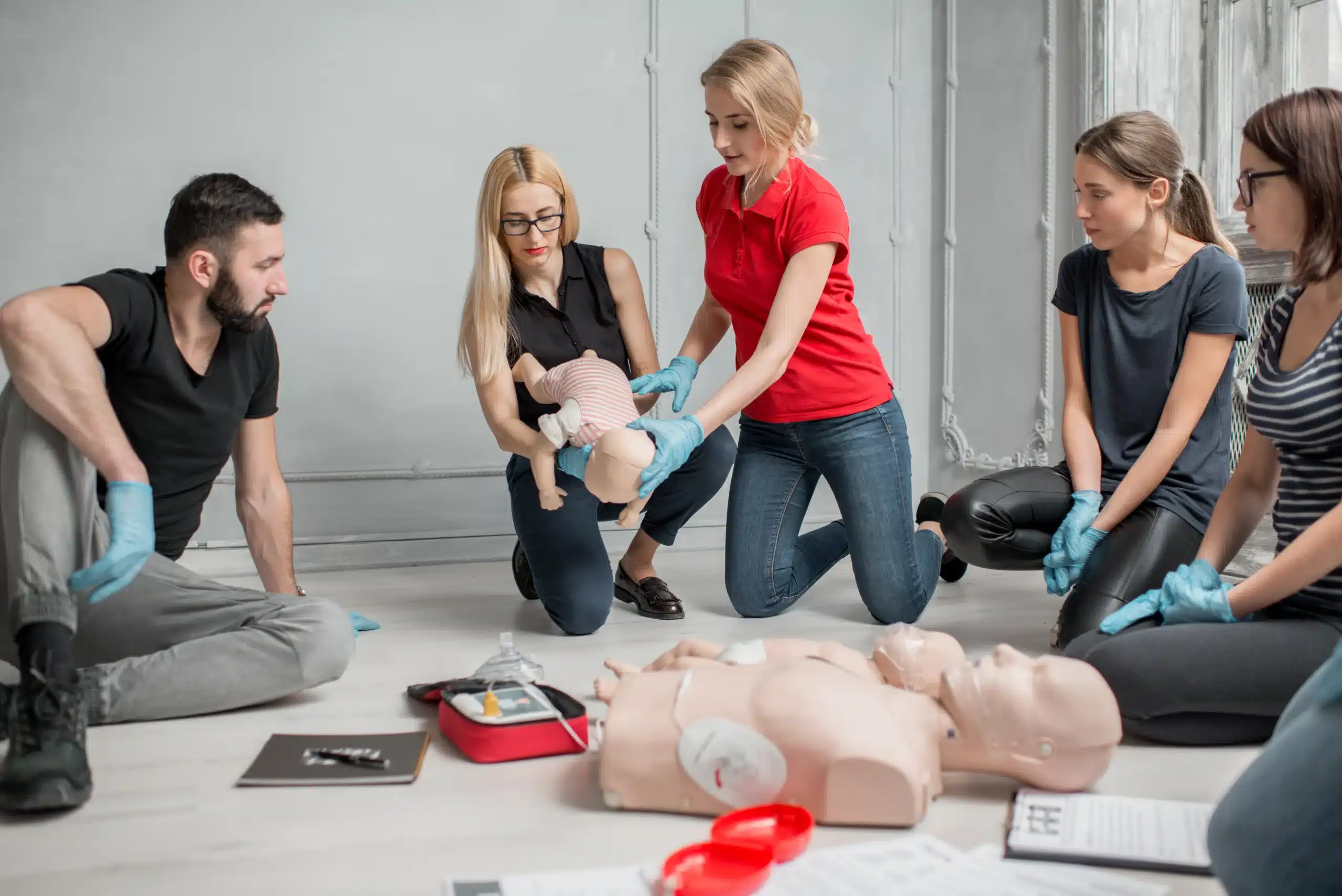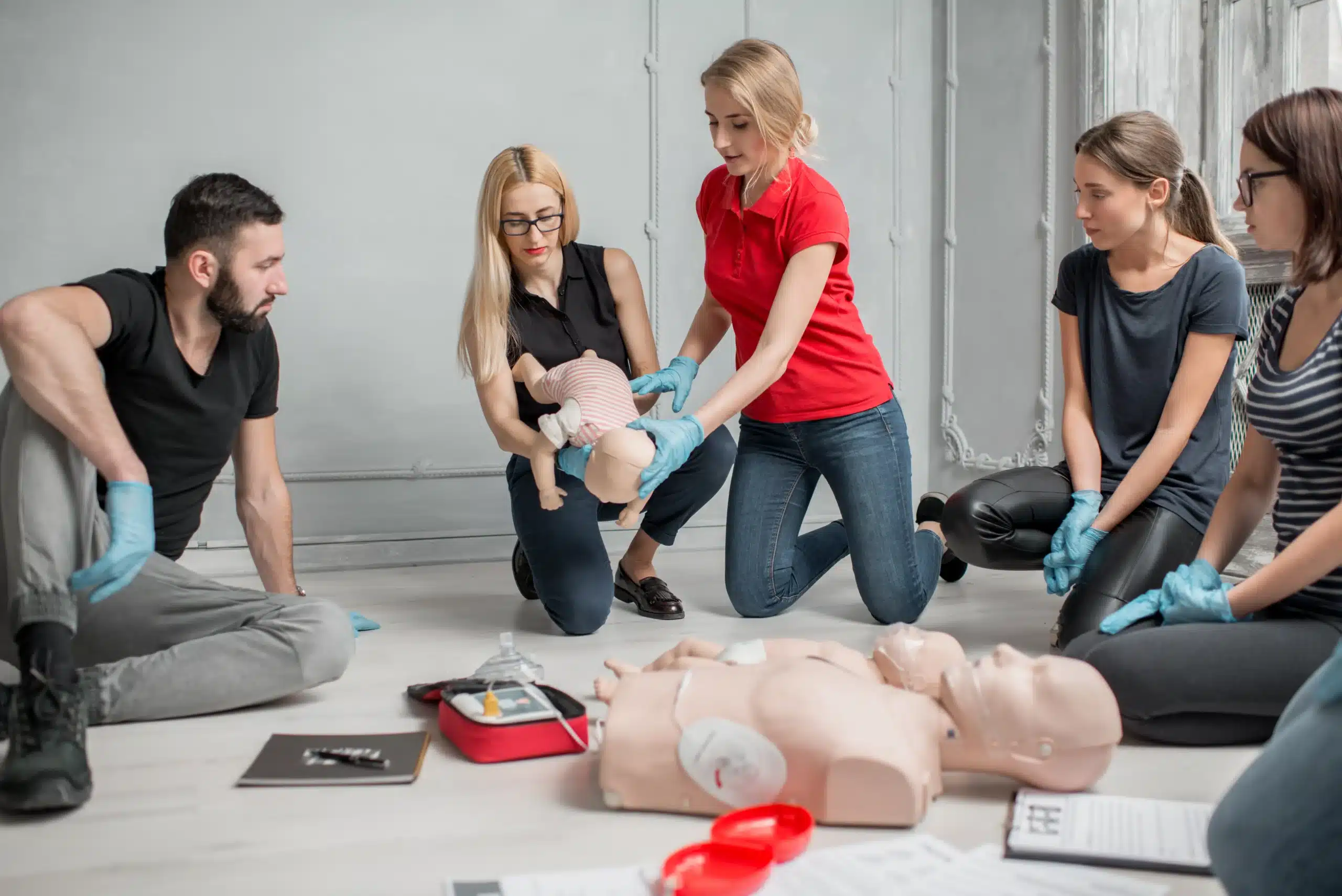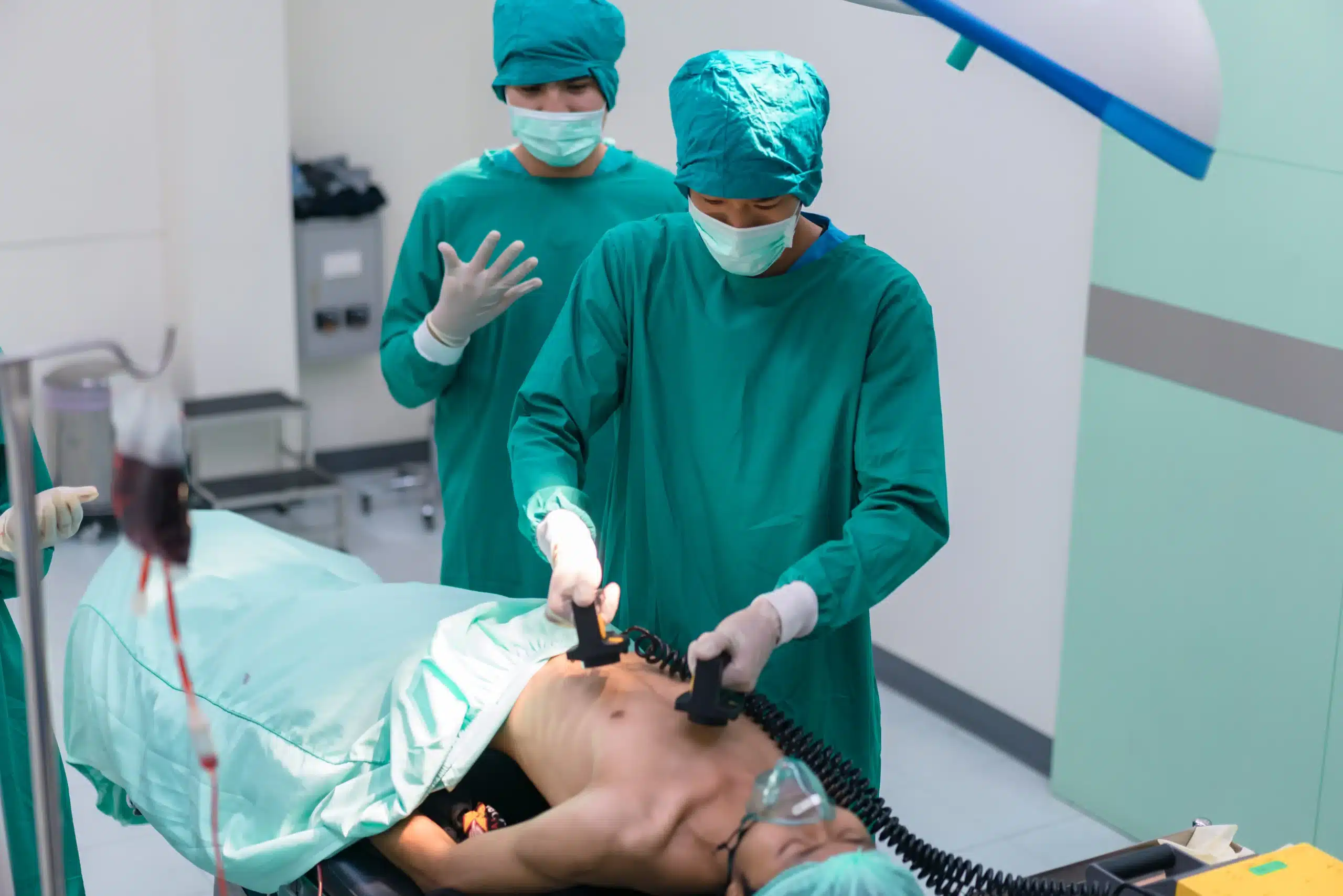CPR certification is more than just a qualification; it’s a life-saving skill that empowers you to make a real difference in a medical emergency. This guide will walk you through everything you need to know about CPR certification, from finding “CPR certification near me” to understanding the different types of courses and certifications available. We’ll explore reputable organizations like the American Heart Association and the American Red Cross, discuss the costs and value of CPR training, and address common misconceptions. Whether you’re a healthcare provider, a parent, or simply someone who wants to be prepared, this guide will help you choose the right CPR certification and understand the importance of staying up-to-date with your skills.
Key Takeaways
- CPR certification equips you with life-saving skills: Learning CPR, whether for professional or personal reasons, empowers you to handle emergencies effectively. Explore in-person, online, or blended learning options to find the best fit.
- Select a recognized CPR certification program: Opt for training from established organizations like the AHA or American Red Cross to ensure your certification is widely accepted. Confirm the program aligns with employer and state requirements.
- Stay current with your CPR training: Regularly refresh and renew your certification to maintain your skills and confidence. Even if recertification isn’t due, consider a refresher course every 6-12 months to stay sharp.
What is CPR Certification?
CPR certification proves you know how to perform cardiopulmonary resuscitation (CPR) and, often, how to use an automated external defibrillator (AED). Earning your CPR certification equips you with life-saving skills to handle cardiac and breathing emergencies. It’s essential for healthcare professionals and anyone who might need to respond to these critical situations. CPR training and certification are vital components of emergency preparedness.
CPR certification involves learning theory and practicing your skills. You’ll learn the science behind CPR and then practice the technique on mannequins. Many courses also cover AED use, giving you another tool to help someone in cardiac arrest. This hands-on training builds your confidence and prepares you to act quickly and effectively under pressure. Obtaining CPR certification is the first step in being prepared to provide a high level of care.
It’s important to renew your certification regularly. Guidelines and best practices can change, so staying current ensures you’re always providing the most effective care. Plus, regular practice keeps those essential skills sharp.
CPR Certification Courses
CPR certification courses equip you with the life-saving skills to respond to cardiac emergencies. With various learning formats available, you can choose the best option to fit your schedule and learning style. Let’s explore the different types of CPR training: in-person, online, and blended learning. This will help you decide which CPR class is right for you.
In-Person CPR Training
In-person CPR training offers a hands-on learning experience with direct interaction with a certified instructor. This format allows for real-time feedback, demonstrations, and practice sessions. You’ll work with training manikins and other equipment, developing muscle memory and confidence in performing CPR techniques. Many organizations, such as the University of Southern Mississippi, offer in-person CPR/AED and First Aid certification courses. These courses typically provide certifications valid for two years upon successful completion. The structured environment of in-person training ensures you receive comprehensive instruction and personalized guidance. For some, practicing on manikins with an instructor present is the best way to learn CPR.
Online CPR Training
Online CPR training provides a flexible alternative for those with busy schedules or limited access to in-person classes. You can learn at your own pace, reviewing materials and practicing skills as needed. Organizations like the American Red Cross offer online CPR/AED courses that cover essential life-saving techniques. While online training may not offer the same level of hands-on practice as in-person classes, it provides a convenient and accessible way to learn CPR fundamentals. Some online courses may require an in-person skills evaluation component for certification. This option often appeals to those looking for affordable CPR training.
Blended Learning CPR Training
Blended learning combines the best of both worlds: self-paced online learning and in-person skill sessions. This approach allows you to study the course material online at your convenience and then attend a hands-on session to practice and demonstrate your skills to a certified instructor. The Red Cross offers blended learning CPR classes, providing a comprehensive training experience. This format is ideal for those who prefer a flexible learning schedule while still benefiting from personalized instruction and feedback. Blended learning ensures you grasp the theoretical concepts and develop the practical skills necessary to perform CPR effectively. For many, this hybrid approach offers the ideal balance between convenience and hands-on learning.
Reputable CPR Certification Organizations
Choosing the right CPR certification program is crucial. Look for programs offered by well-established and trusted organizations. These organizations maintain high standards, ensure updated training materials based on the latest scientific guidelines, and provide widely recognized certifications. Here are a few leading organizations to consider:
American Heart Association (AHA)
The American Heart Association (AHA) is a leader in CPR education and research. Their certification courses equip individuals with the skills to respond effectively in cardiac emergencies. The AHA emphasizes CPR training as a critical link in the chain of survival for cardiac arrest victims. They offer a range of courses, from basic life support (BLS) for healthcare providers to Heartsaver courses for the general public. AHA certifications are highly respected and often preferred by healthcare employers. You can find more information on their BLS course here. For those interested in advanced cardiovascular life support, check out their ACLS course here. CPR and first-aid certifications are also available here.
American Red Cross
The American Red Cross offers a variety of CPR certification courses to meet diverse needs. They provide in-person, online, and blended learning options, making CPR training accessible and flexible. Whether you prefer hands-on instruction or the convenience of online learning, the Red Cross has a course format that works for you. Their programs cover adult, child, and infant CPR, as well as how to use an automated external defibrillator (AED).
Safety Training Seminars
Safety Training Seminars offers comprehensive CPR training essential for both healthcare professionals and the general public. They focus on the life-saving potential of CPR and strive to make this vital skill accessible to everyone. Safety Training Seminars provides training aligned with current guidelines, empowering individuals to act confidently in emergencies. They offer the RQI program for healthcare professionals looking to maintain their resuscitation skills, which you can learn more about here.
National Safety Council
The National Safety Council emphasizes the importance of obtaining and regularly updating CPR certification. Their courses adhere to the latest guidelines and best practices, ensuring participants are well-prepared to provide effective care in emergencies. Staying current with your CPR training builds confidence and contributes to better outcomes for those in need. The National Safety Council offers a range of safety training programs, including CPR, first aid, and AED training.
Choose the Right CPR Certification
CPR certification is a powerful tool, and choosing the right one depends on your specific needs. Whether you’re a healthcare professional, a concerned parent, or simply someone who wants to be prepared, understanding the different types of
Healthcare Provider CPR Certifications
For those working in healthcare, a healthcare provider CPR certification is essential. This level of training, often provided through the American Heart Association (AHA) or the American Red Cross, goes beyond the basics. It covers more advanced techniques and is designed for individuals who regularly encounter medical emergencies as part of their job. Think doctors, nurses, paramedics, and other medical professionals. These certifications typically include training in Basic Life Support (BLS) and may also cover Advanced Cardiovascular Life Support (ACLS) or Pediatric Advanced Life Support (PALS), depending on your specific role. Gaining CPR certification through accredited programs like these is a crucial step toward becoming a well-rounded healthcare provider.
Layperson CPR Certifications
If you’re not a healthcare professional but still want to learn CPR, a layperson certification is a great option. These courses focus on the fundamental skills needed to respond to emergencies in everyday life. They’re perfect for parents, teachers, coaches, babysitters, or anyone who wants to be equipped to handle a crisis. Layperson certifications cover adult, child, and infant CPR, giving you the confidence to act quickly and effectively in a variety of situations. Learning CPR empowers individuals to take action and potentially save lives.
Specialized CPR Certifications (Pediatric, Infant, etc.)
Beyond the standard certifications, there are also specialized CPR courses available. These programs cater to specific needs and situations, such as pediatric or infant CPR. If you work with children regularly, like in a daycare or school setting, these specialized certifications are highly recommended. They provide tailored training to address the unique needs of younger age groups. CPR training can significantly increase someone’s chance of survival, and having specialized knowledge can make all the difference in a critical moment.
CPR Certification: Cost & Value
Getting CPR certified is an investment in yourself and your community. While there’s a financial aspect, the value of this life-saving skill far outweighs the cost. Let’s break down the typical expenses and explore why CPR training is worthwhile.
Average Price Range
CPR certification costs vary based on several factors, including the type of course, your location, and the training organization. Generally, you can expect to pay between $40 and $60 for combined CPR and First Aid training. Basic Life Support (BLS) classes for healthcare providers typically range from $60 to $80. Many organizations offer discounts for group CPR training, with prices often falling between $35 and $45 per person. Some providers may also have a minimum fee for groups, so it’s always a good idea to check with the training center directly. For instance, a class of eight trainees might have a minimum fee of $280 to $320. Remember to inquire about group discounts when registering.
Discounts and Promotions
Many organizations offer discounts and promotions to make CPR training more accessible. Look for seasonal deals, early bird registration discounts, or special offers for groups. Some organizations, like the Red Cross, occasionally offer discounts on training supplies or educational materials. A quick online search can often uncover coupon codes for various training providers.
Invest in Life-Saving Skills
The true value of CPR certification lies in the skills you gain. Learning CPR empowers you to respond effectively during medical emergencies, potentially saving a life. This knowledge benefits those around you and provides a sense of confidence and preparedness. Think of it as an investment in your community and your own peace of mind. The ability to provide immediate assistance in a critical situation is invaluable, and the skills you acquire through CPR certification can make a profound difference.
Validate Your CPR Certification
Once you’ve earned your CPR certification, it’s essential to ensure its validity and understand any requirements or regulations that may apply. Here’s what you should know:
Accreditation Check
Not all CPR certifications are created equal. Online-only CPR certifications may not meet the requirements of all employers or state regulations. Always verify that the organization providing the certification is accredited and recognized by relevant bodies like the American Heart Association (AHA) or the American Red Cross. For example, some states, like Wisconsin, specifically require in-person training for certain professions (e.g., chiropractors). Do your research to confirm your chosen certification aligns with your professional and location needs. If you’re looking for in-person training, consider our AHA-certified courses available in Milpitas and over 60 other cities. We also offer CPR and First Aid certification courses through the American Heart Association.
Employer Recognition
Different employers may have varying preferences regarding CPR certifications. While some may accept certifications from various organizations, others might specifically require AHA certification, especially in healthcare settings. This is often because AHA certifications are known for their comprehensive and rigorous training standards. Check with your employer or prospective employer to determine their specific requirements. We offer a range of AHA courses, including BLS, ACLS, and PALS, to meet diverse professional needs.
State Regulations
CPR regulations can differ from state to state. Some states may have specific requirements for CPR certification renewal or continuing education. Staying informed about your state’s regulations is crucial to maintaining a valid and up-to-date certification. Regularly review the guidelines provided by your state’s health department or relevant licensing boards. Beyond formal certifications, engage in continuous learning to stay informed about advancements in CPR and emergency response. Resources like CPR Classes Near Me offer valuable information on post-CPR procedures and staying current with best practices. For healthcare professionals seeking to maintain their skills, our RQI program offers a flexible and convenient way to stay certified.
Renew Your CPR Certification
Getting your initial CPR certification is a great first step. But staying current with the latest techniques and guidelines is essential for providing effective care. Regularly renewing your certification ensures you’re always prepared to act confidently and competently in an emergency. It also demonstrates your commitment to maintaining high standards of care.
Initial Certification Time
CPR certification courses cover essential life-saving skills, including chest compressions, rescue breaths, and how to recognize the signs of a cardiac arrest. These courses often include training on using an automated external defibrillator (AED). Initial certification typically involves both a classroom component and a hands-on skills practice session. This combination of learning and practice helps build a strong foundation for responding effectively in real-life emergencies. You can find in-person CPR training at our Milpitas location.
Renewal Requirements
Many organizations, including the American Heart Association (AHA), recommend renewing your CPR certification every two years. This timeframe helps ensure your skills and knowledge remain sharp. However, even if your certification is still valid, consider refreshing your CPR skills more frequently. Annual refreshers are a great way to reinforce your training and stay up-to-date with any changes in CPR guidelines. Regular practice helps maintain muscle memory and boosts your confidence in responding to emergencies. Check out our CPR renewal courses to easily recertify.
Refresh Your CPR Skills
Even if your certification isn’t due for renewal yet, refreshing your CPR skills every 6 to 12 months is a smart move. Regular practice helps maintain the muscle memory needed for effective chest compressions and rescue breaths. Plus, it’s a chance to review the latest CPR guidelines and ensure you’re providing the best possible care. Think of it like a tune-up for your life-saving skills, keeping them sharp and ready when they matter most. You can find refresher courses and practice sessions through various providers, including Safety Training Seminars. We offer a variety of courses, including BLS, ACLS, and PALS certifications.
Find CPR Certification Classes Near You
Locating a CPR class that fits your schedule and learning style is easier than you think. Whether you prefer hands-on instruction or the flexibility of online learning, several resources can help you find the right CPR certification course. Remember, Milpitas CPR Classes offers a variety of convenient options for CPR, BLS, ACLS, PALS, and First Aid certification in Milpitas, San Jose, and Santa Clara. Check our website for a full list of courses and schedules.
Local Training Centers
Start your search by checking with local training centers. Hospitals, community colleges, and recreation centers often host CPR certification courses. For example, The University of Southern Mississippi’s Campus Recreation department offers American Red Cross-certified CPR/AED and First Aid courses. These local options provide hands-on training and direct interaction with instructors. A quick online search or a phone call can usually point you in the right direction. Don’t forget to check with your employer, too, as some workplaces offer on-site CPR training. If you’re in the Milpitas area, consider our convenient location for AHA-certified courses.
Online Search Tools
The internet offers convenient tools to locate CPR classes near you. The American Red Cross website lets you search for classes by zip code. Other national organizations, such as the American Heart Association and the National Safety Council, also offer online class finders. These tools simplify your search and allow you to compare course options, schedules, and pricing. You can also find information on our RQI program for healthcare professionals on our website.
Community Resources
Your local community also offers valuable resources for finding CPR certification. Check with community centers, libraries, or local government websites for information on upcoming CPR courses. Independent training providers, like LT’s CPR Certification Center, often offer flexible scheduling and personalized instruction. Look for businesses specializing in safety training or first aid, as they frequently include CPR certification among their services. Word-of-mouth can also be helpful; ask friends, family, or colleagues for recommendations. Don’t overlook smaller businesses, which may offer competitive pricing and personalized attention. For those in Milpitas, San Jose, and Santa Clara, we offer CPR and First Aid certification courses through Safety Training Seminars, a woman-owned AHA Training Center.
Prepare for Your CPR Course
Getting ready for your CPR class isn’t difficult, but a little prep work can make a big difference. Knowing what to expect and having the right materials will help you focus on learning these life-saving skills.
What to Bring
Keep it simple. A notebook and pen are helpful for taking notes during the course. Your instructor may also suggest specific items, so check for any pre-course communications. Comfortable clothing is a must since you’ll be practicing skills like chest compressions.
What to Expect
CPR certification courses typically involve two main components: a written exam and a hands-on skills test. The written portion covers the key concepts and principles of CPR. The practical skills test involves performing CPR on a manikin, where you’ll demonstrate proper hand placement, compression depth, and rhythm, mirroring real-life scenarios. This hands-on practice is essential for building confidence and mastering the techniques.
Study Resources and Practice Tests
While your CPR course will provide all the necessary instruction, using study resources and practice tests can give you an extra boost. Many organizations offer free study guides and practice tests online. The National CPR Association has a comprehensive resource with updated practice tests and study guides for CPR, BLS, ACLS, and PALS. These resources can reinforce what you learn in class and help you feel confident on exam day.
Common CPR Certification Misconceptions
Let’s clear up a few common misconceptions about CPR certification. These misunderstandings can sometimes discourage people from getting certified and having the confidence to respond to emergencies.
Online vs. In-Person Training
One common question is whether online CPR certification is valid. While online-only options are convenient and often less expensive, they typically don’t offer the hands-on practice that’s so crucial for performing effective CPR. Some states and employers require in-person training, particularly for healthcare providers. A blended learning approach, which combines online coursework with in-person skills sessions, offers a good balance. This format often satisfies requirements while still offering some flexibility. If you’re not sure which type of training you need, it’s always a good idea to check with your employer or look into your state’s requirements.
Recertification Importance
Another misconception is about the need for recertification. It’s important to remember that CPR certification isn’t a one-time thing. While the general recommendation is to renew your CPR certification every two years, refreshing your skills annually is incredibly helpful. Regular practice reinforces what you’ve learned and helps you maintain the muscle memory needed to respond effectively in a real emergency. Studies have actually shown that people who refresh their CPR skills each year are much more likely to perform compressions effectively when they need to. Aim for a refresher course every six to 12 months to keep your skills current.
Who Needs CPR Training
Finally, there’s a misconception that CPR training is only for healthcare workers. While it’s definitely a must-have for medical professionals, CPR training is a valuable skill for anyone. From parents and teachers to coaches and childcare providers, knowing CPR can give you the power to save a life in all sorts of situations. Whether you work in healthcare and want to strengthen your skills or simply want to be prepared for anything, getting CPR certified could be one of the most important things you ever do.
Related Articles
- Why CPR Is Vital in Healthcare & How to Get Certified
- CPR Certification in San Jose: Your Complete Guide – Milpitas CPR Classes
- CPR Training in Santa Clara: A Complete Guide – Milpitas CPR Classes
- Online CPR Classes in Milpitas: Your Complete Guide – Milpitas CPR Classes
- CPR Courses in San Jose: The Complete Guide – Milpitas CPR Classes
Frequently Asked Questions
How long is CPR certification valid? CPR certifications are typically valid for two years. However, it’s highly recommended to refresh your skills annually, even if your certification isn’t due for renewal. This helps maintain muscle memory and ensures you’re up-to-date with the latest guidelines.
What’s the difference between healthcare provider and layperson CPR certifications? Healthcare provider CPR certifications, like BLS, are designed for medical professionals and cover more advanced techniques. Layperson certifications focus on fundamental skills for responding to emergencies in everyday settings. Both are valuable, but the right choice depends on your specific needs and career.
Is online CPR certification accepted everywhere? While online CPR certification offers convenience, it may not meet the requirements of all employers or states, especially for healthcare professionals. Many prefer or require in-person training for the hands-on practice it provides. Always check with your employer or state regulations to confirm acceptance. Blended learning, combining online coursework with in-person skills sessions, is often a good compromise.
Where can I find CPR classes near me? You can find CPR classes through various avenues. Check with local hospitals, community colleges, and recreation centers. Online search tools from organizations like the American Red Cross and the American Heart Association can help you locate classes by zip code. Don’t forget to explore community resources like libraries and community centers, and consider independent training providers for more flexible options.
How much does CPR certification cost? The cost of CPR certification varies depending on the course type, location, and training organization. Generally, expect to pay between $40 and $80. Group discounts are often available, so inquire about those when registering. Look for seasonal deals or early bird registration discounts to save on costs.
